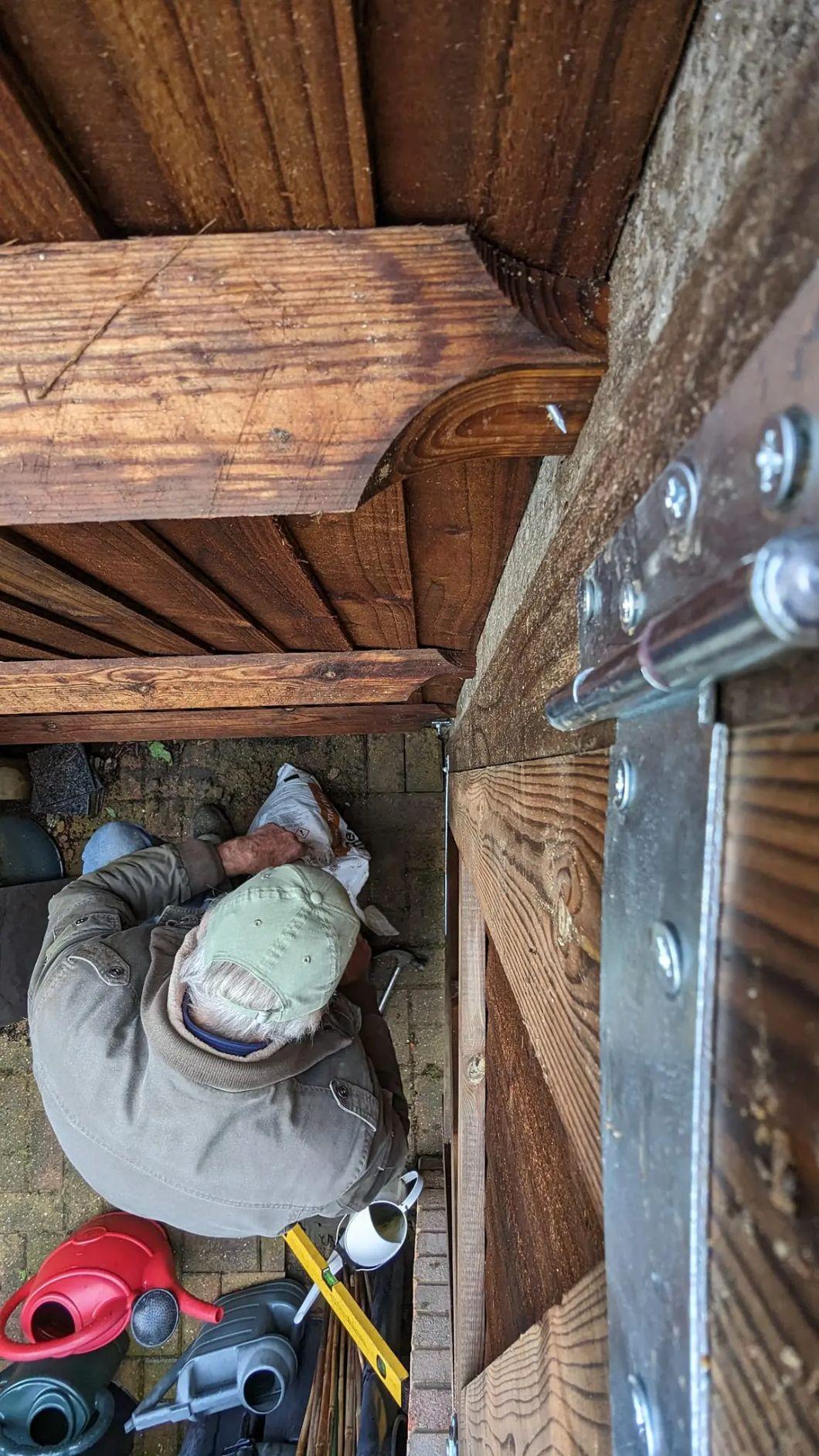A Complete Guide to Garden Fencing and Animal Prevention
Protecting Your British Garden from Wildlife Intrusions
Sheridan fencing - Dave Relf
Introduction
Living in the British countryside or suburban areas often means sharing our space with local wildlife. While we deeply appreciate the role wildlife plays in our ecosystem—from bees pollinating our flowers to hedgehogs controlling garden pests—there are times when certain animals can cause significant damage to our cherished gardens. Whether it's foxes digging up lawns, rabbits decimating vegetable patches, or neighbourhood cats using prized flowerbeds as litter trays, some gardeners need practical solutions to protect their hard work.
This guide isn't about excluding wildlife entirely—rather, it's about finding a balance that allows us to maintain beautiful, productive gardens while still supporting local wildlife in appropriate ways. For those struggling with persistent garden damage, the following solutions offer humane and effective methods to protect specific areas while still maintaining wildlife-friendly spaces elsewhere in your garden.
Primary Fencing Solutions
1. Choosing the Right Fence Type
- Close-board Fencing: Ideal for maximum privacy and security, featuring vertical boards overlapped for strength
- Panel Fencing: Cost-effective and quick to install, available in various heights from 0.9m to 1.8m
- Picket Fencing: Suitable for front gardens, offering visibility whilst deterring larger animals
- Chain-link Fencing: Excellent for vegetable patches, can be reinforced with smaller mesh for rabbit protection
- Post and Rail: Traditional countryside fencing, can be enhanced with wire mesh for additional security
2. Height Considerations
- Standard garden fencing heights in the UK typically range from 1.8m to 2m
- Planning permission may be required for fences exceeding 2m
- For fox prevention, consider fencing of at least 1.8m with additional deterrent features
- Rabbit-proof fencing should extend at least 30cm below ground
Effective Animal Deterrent Solutions
1. Motion-Activated Deterrents
- Smart Sprinkler Systems:
- Surprise water bursts effectively deter foxes, cats, and squirrels
- Animals typically avoid areas where they've been startled
- Water-efficient and humane solution
- Ultrasonic Devices:
- Emit high-frequency sounds uncomfortable for animals
- Undetectable to humans
- Effective against cats, dogs, and foxes
- Strategic placement along fence perimeters
2. Physical Barriers and Anti-Climb Features
- Roller Bars:
- Spinning mechanism prevents secure grip
- Particularly effective against cats, squirrels, and foxes
- Professional installation recommended
- Floppy Tops:
- Loose extensions that destabilise climbing attempts
- Cost-effective solution for existing fencing
- Regular maintenance required to maintain effectiveness
3. Natural Barrier Solutions
- Defensive Planting Along Fences:
- Pyracantha (Firethorn)
- Hawthorn
- Thorny hedging provides natural deterrent
- Adds decorative element whilst increasing security
- Aromatic Deterrents:
- Lavender
- Rosemary
- Garlic plants
- Strategic placement near fence bases
4. Protected Growing Areas
- Floating Row Covers:
- Breathable barriers for specific plant protection
- Allows sunlight and water penetration
- Effective against small animals and birds
- Fine Mesh Netting:
- Protection for fruit trees and vegetable beds
- Multiple gauge options for different pests
- Regular inspection required for damage
5. Scent-Based Solutions
- Natural Repellents:
- Essential oils (peppermint, citrus)
- Vinegar-soaked cotton balls
- Strategic placement near entry points
- Commercial Deterrents:
- DEFRA-approved repellent sprays
- Regular reapplication needed
- Specific formulations for different animals
6. Visual and Auditory Deterrents
- Reflective Elements:
- Hanging CDs
- Reflective tape
- Creates disorienting light patterns
- Movement-Based Deterrents:
- Wind chimes
- Garden spinners
- Pinwheels in key locations
Wildlife Management Strategies
1. Alternative Wildlife Zones
- Designated Wildlife Areas:
- Create log piles
- Plant wildflower patches
- Position away from main garden
- Strategic Feeding Stations:
- Bird feeders placed away from protected areas
- Regular maintenance to prevent overflow
- Consider squirrel-proof designs
2. Seasonal Considerations
- Winter Preparations:
- Increased deterrent measures during food scarcity
- Additional barrier reinforcement
- Regular inspection of fence integrity
- Spring and Summer Adjustments:
- Enhanced protection during growing season
- Regular maintenance of barrier plants
- Monitoring of wildlife patterns
Maintenance and Monitoring
1. Regular Inspection Protocol
- Weekly Checks:
- Examine fence lines for new gaps
- Look for signs of digging
- Check deterrent system functionality
- Monthly Maintenance:
- Clear vegetation from fence bases
- Refresh scent deterrents
- Clean motion sensors and sprinklers
2. Professional Support
- When to Seek Help:
- Persistent animal intrusions
- Structural fence damage
- Complex installation requirements
- Expert Solutions:
- Professional fence height modifications
- Security enhancement installations
- Repair of damaged sections
Legal and Ethical Considerations
1. Wildlife Protection
- Ensure compliance with UK wildlife laws
- Use only humane deterrent methods
- Maintain essential wildlife corridors
2. Neighbourhood Considerations
- Discuss fence modifications with neighbours
- Consider shared boundary responsibilities
- Maintain aesthetic standards
Conclusion
Effective garden protection requires a comprehensive approach combining robust fencing with multiple deterrent strategies. Regular maintenance, seasonal adaptations, and appropriate use of both physical and natural barriers ensure long-term effectiveness whilst maintaining your garden's beauty and functionality.
Remember that different animals require different deterrent approaches, and what works in one garden may need adaptation in another. The key is to remain observant, adaptable, and persistent in maintaining your chosen solutions.
For persistent issues or professional installation, consult qualified fencing contractors who understand local conditions and wildlife patterns. A well-planned combination of fencing and deterrents will help create a protected yet welcoming garden space that you can enjoy year-round.


